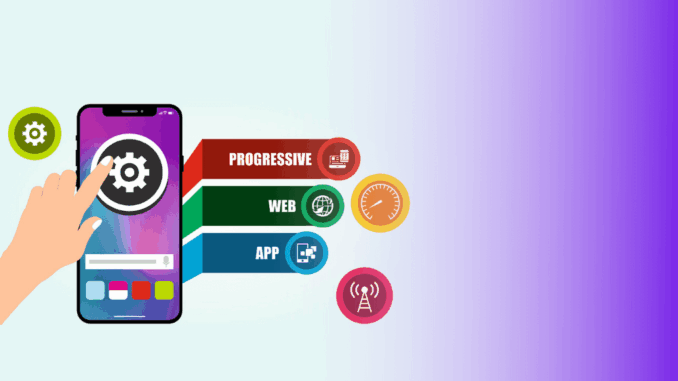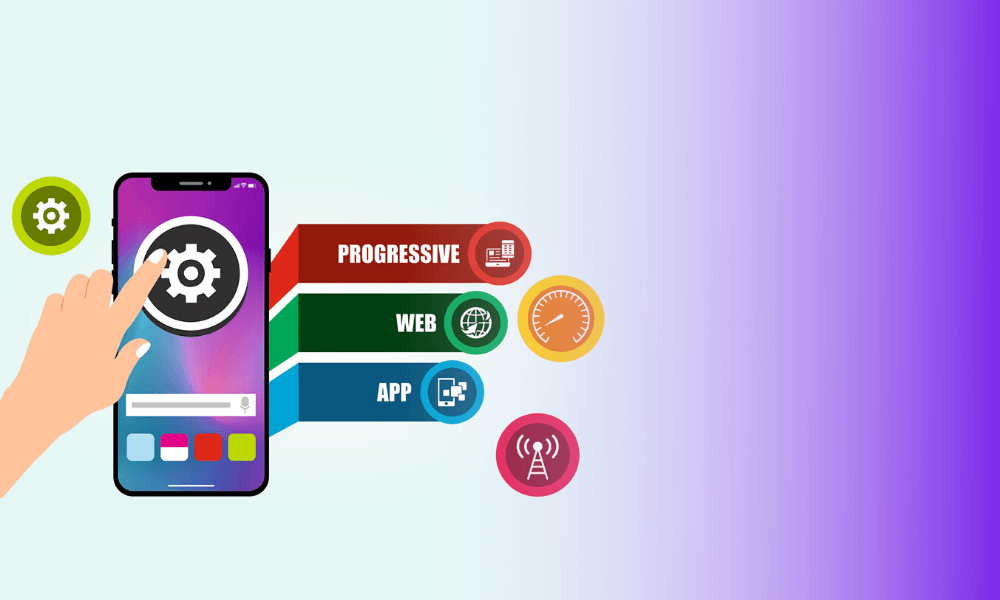
In today’s digital-first world, users expect applications to be lightning-fast, reliable, and available anytime — even with poor internet connectivity. At the same time, businesses are under pressure to reduce development costs, reach wider audiences, and improve user engagement. Enter Progressive Web Apps (PWAs) — a revolutionary approach that bridges the gap between traditional websites and native mobile apps.
📱 What is a Progressive Web App (PWA)?
A Progressive Web App is a type of application software delivered through the web, built using common web technologies such as HTML, CSS, and JavaScript. What makes it unique is its ability to behave like a native mobile app: it can work offline, load quickly, send push notifications, and even be installed on a user’s home screen.
Unlike traditional web apps, PWAs leverage modern browser capabilities like Service Workers, Web App Manifests, and HTTPS to provide a more secure, reliable, and app-like experience — all from a single codebase.
🌟 Core Features of PWAs
- Offline Support
Through service workers, PWAs can cache key assets and content, allowing users to access the app even when offline or on flaky connections. - App-Like UX
PWAs offer smooth animations, full-screen mode, and interactions that feel native, thanks to responsive design and flexible navigation. - Fast Load Times
Because data is pre-cached and requests are minimized, PWAs often load in under two seconds — a major factor in reducing bounce rates. - Secure by Design
PWAs run over HTTPS by default, ensuring encrypted and trusted communication. - Installability
Users can “install” the app directly from their browser, without needing to visit Google Play or the App Store. - Push Notifications
With the right permissions, PWAs can re-engage users by sending real-time alerts, reminders, or updates — just like native apps.
🛠️ How PWAs Work (Simplified)
At the core of every PWA are:
- Service Workers: Background scripts that manage caching, push messages, and background sync.
- Web App Manifest: A JSON file that defines the app’s metadata — like name, icons, colors, and how it should launch.
- HTTPS: Guarantees data security and allows access to powerful browser features.
- Responsive Design: Ensures the app looks great on any screen size.
These components work together to turn a regular website into an experience that rivals any mobile app.

🔍 PWA vs Native Apps: Key Differences
| Feature | PWA | Native App |
|---|---|---|
| Platform | Cross-platform (Web) | Platform-specific (iOS/Android) |
| Installation | Direct from browser | App store required |
| Updates | Automatic via web | Manual/user-triggered |
| Development Cost | Lower (single codebase) | Higher (two separate builds) |
| Discoverability | Search engines | App store + SEO |
| Offline Capability | Yes (with caching) | Yes |
| Push Notifications | Yes (limited on iOS) | Full support |
🔧 Conclusion: For most business cases, PWAs offer better ROI with fewer maintenance headaches.
🚀 Real-World Brands Using PWAs Successfully
- Twitter Lite
Reduced data usage by 70%, increased pages per session by 65%, and had 75% more Tweets sent. - Starbucks
Their PWA is 99.84% smaller than the native app and works offline for order customization and cart saving. - Uber
The PWA works on low-speed networks and takes less than 50KB to load, ideal for emerging markets. - AliExpress
Improved conversion rates by 104% for new users with their fast-loading PWA.
📈 SEO & Performance Advantages
- PWAs are fully indexable by search engines, unlike native apps.
- Lighthouse Audits from Google help optimize performance, accessibility, and SEO.
- Lower bounce rates due to speed and mobile-friendliness.
- Better Core Web Vitals scores, which directly impact search rankings.
💼 Business Benefits of Adopting PWAs
- Reduce Development & Maintenance Costs: One app for all platforms.
- Faster Global Reach: Especially useful in areas with slow internet or limited device storage.
- Boost Engagement: Instant load, offline support, and push notifications increase user return rates.
- Avoid App Store Dependencies: No need to follow strict app store guidelines or pay listing fees.
🔮 Future Outlook of PWAs
With support from major tech companies like Google, Microsoft, and Mozilla, PWAs are gaining momentum fast. Apple has also gradually expanded support for service workers and push notifications in Safari, making PWAs a viable cross-platform solution even on iOS.
In 2025 and beyond, we can expect:
- Wider PWA adoption in enterprise solutions.
- Better integration with device hardware (e.g., camera, sensors, biometrics).
- More PWA-enabled platforms (smart TVs, wearables, automotive systems).
💡 Final Thoughts
Progressive Web Apps represent a paradigm shift in web and mobile development. They eliminate the trade-off between performance and accessibility, offering fast, lightweight, and engaging experiences that users love — and developers appreciate.
If you’re a business looking to reach more users with less effort and cost, investing in PWAs is no longer just an option — it’s a competitive advantage.

Leave a Reply